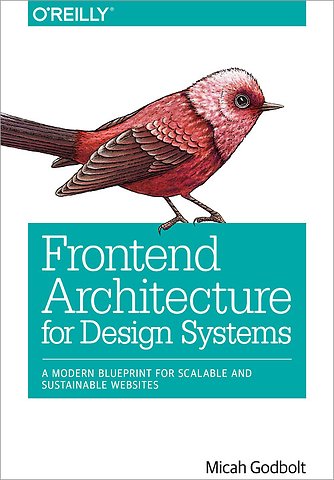Frontend Architecture for Design Systems
Paperback Engels 2016 1e druk 9781491926789Samenvatting
Imagine what a large-scale web project would look like if frontend development were not treated as an add-on, but as an equal partner with backend development and content strategy. This practical book takes experienced web developers through the new discipline of frontend architecture, including the latest tools, standards, and best practices that have elevated frontend web development to an entirely new level.
Using real-world examples, case studies, and practical tips and tricks throughout, author Micah Godbolt introduces you to the four pillars of frontend architecture. He also provides compelling arguments for developers who want to embrace the mantle of frontend architect and fight to make it a first-class citizen in their next project.
The four pillars include:
- Code: how to approach the HTML, CSS, and JavaScript of a design system
- Process: tools and processes for creating an efficient and error-proof workflow
- Testing: creating a stable foundation on which to build your site
- Documentation: tools for writing documentation while the work is in progress
Specificaties
Lezersrecensies
Inhoudsopgave
U kunt van deze inhoudsopgave een PDF downloaden
Part 1: Origins
1. The Discipline of Frontend Architecture
-Adopting an Architectural Process
2. Alpha Project
-A Slow, Powerful Start
-Armed and Dangerous
3. The Pillars of Frontend Architecture
-Working with the Four Pillars
-The Pillars
Part 2: The Code Pillar
4. HTML
-Markup of the Web’s Past
-Striking a Balance Between Control and Automation
-It All Leads to a Design System
-The Many Faces of Modular CSS Methodologies
-Choosing What Is Right for You
5. CSS
-Specificity Wars and the Pains of Inheritance
-A Modern, Modular Approach
-Other Principles to Help You Along the Way
-Conclusion
6. JavaScript
-Selecting Frameworks
-Maintaining Clean JavaScript
-Conclusion
7. Red Hat Code
-Dependency Bloat
-Location-Dependent Nightmare
-Breaking the Design Down
-Cataloging Components
-The Road Runner Rules
-Writing Your Own Rules
-A Single Selector for Everything
-Semantic Grids
Part 3: The Process Pillar
8. Workflow
-The Old Development Workflow
-The New Development Workflow
-Frontend Workflow
-Development
-Distribution
-Committing Compiled Assets
-Continuous Integration Server
-Distribution Channels
9. Task Runners
-Going All In with Task Runners
-Getting Task Runners into Your Project
-Is There a Clear Winner?
10. Red Hat Process
-Conquering the Last Mile
-Schema-Driven Design System
Part 4: The Testing Pillar
11. Unit Testing
-The Unit
-Test-Driven Development
-A Test-Driven Example
-How Much Coverage Is Enough?
12. Performance Testing
-Setting a Performance Budget
-Raw Metrics
-Timing Metrics
-Hybrid Metrics
-Setting Up Performance Tests
-Conclusion
13. Visual Regression Testing
-The Usual Suspects
-A Tested Solution
-The Many Faces of Visual Regression Testing
14. Red Hat Testing
-Visual Regression in Action
-Conclusion
Part 5: The Documentation Pillar
15. Style Guides
-Hologram Configuration
-SassDoc
-Conclusion
16. Pattern Libraries
-What Is Pattern Lab?
-Pattern Lab in Action
-Homepage Template
-Our First Variables
-Going Atomic
-Running Off Atomic Power
17. Red Hat Documentation
-Stage 1: A Static Style Guide
-Stage 2: We Just Reinvented Pattern Lab
-Stage 3: Splitting the Pattern Library from the Style Guide
-Stage 4: Creating a Unified Rendering Engine
-Stage 5: Automating the Creation of New Patterns
18. Conclusion
Index
Anderen die dit boek kochten, kochten ook
Rubrieken
- advisering
- algemeen management
- coaching en trainen
- communicatie en media
- economie
- financieel management
- inkoop en logistiek
- internet en social media
- it-management / ict
- juridisch
- leiderschap
- marketing
- mens en maatschappij
- non-profit
- ondernemen
- organisatiekunde
- personal finance
- personeelsmanagement
- persoonlijke effectiviteit
- projectmanagement
- psychologie
- reclame en verkoop
- strategisch management
- verandermanagement
- werk en loopbaan







